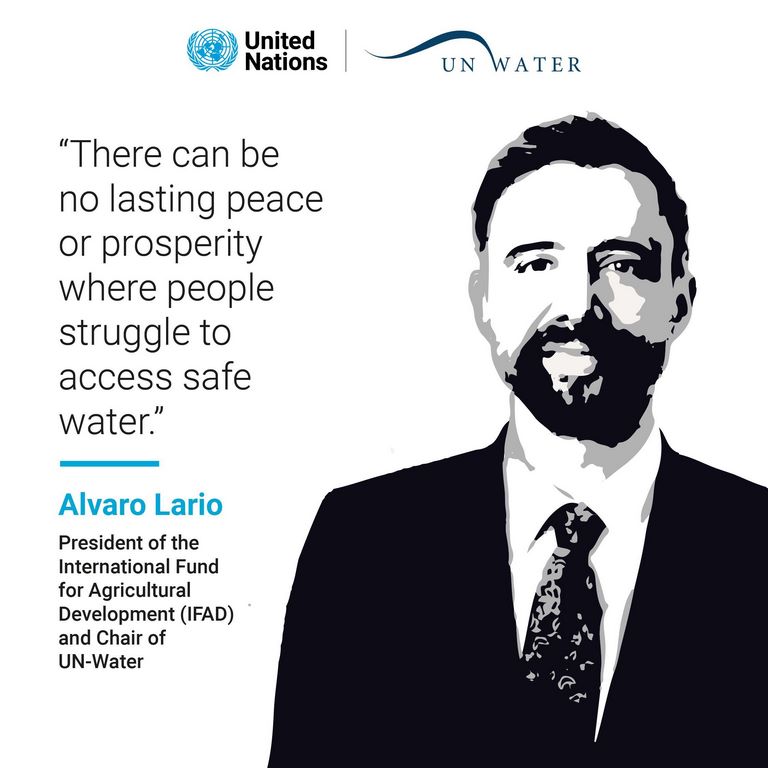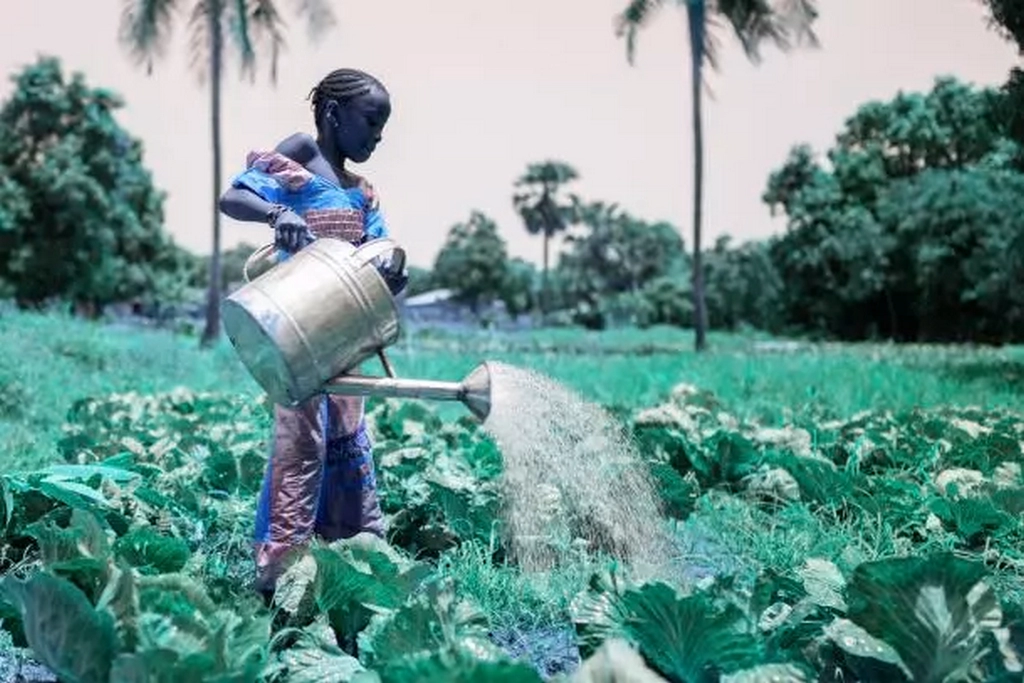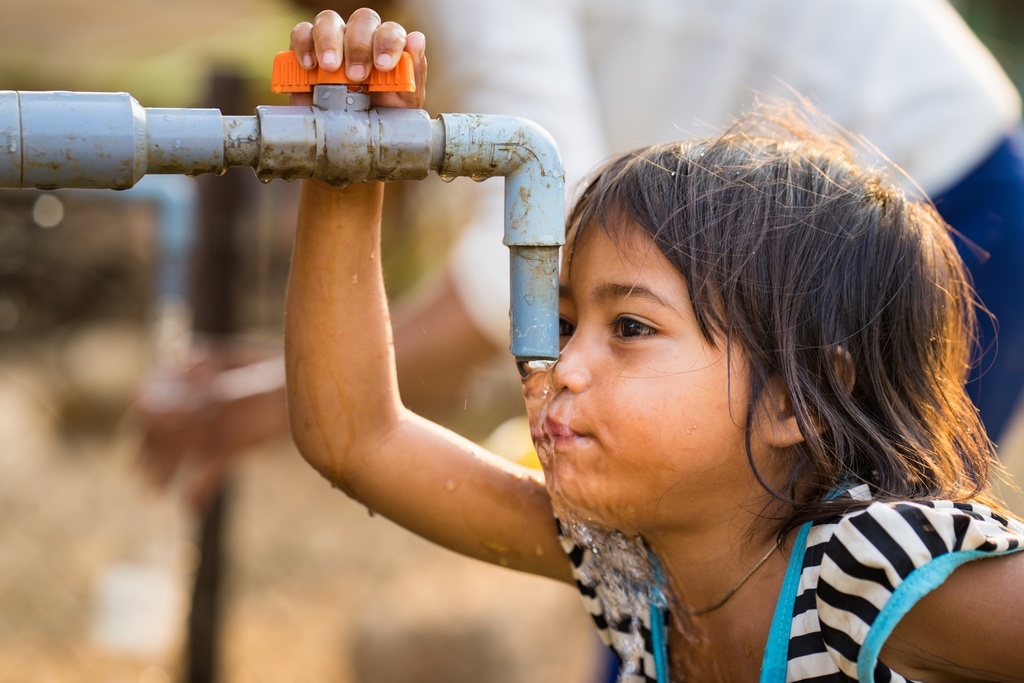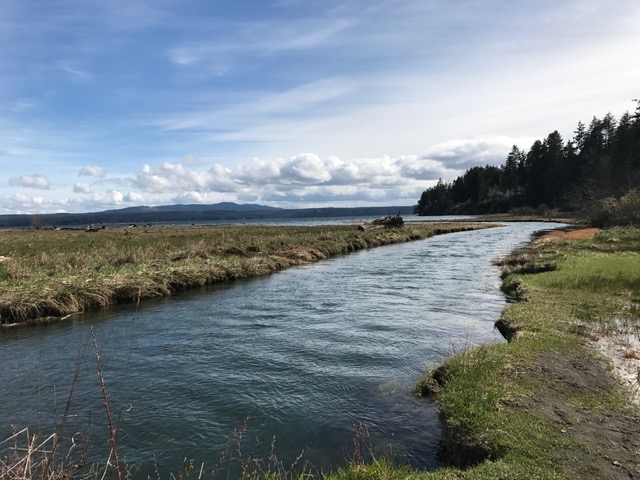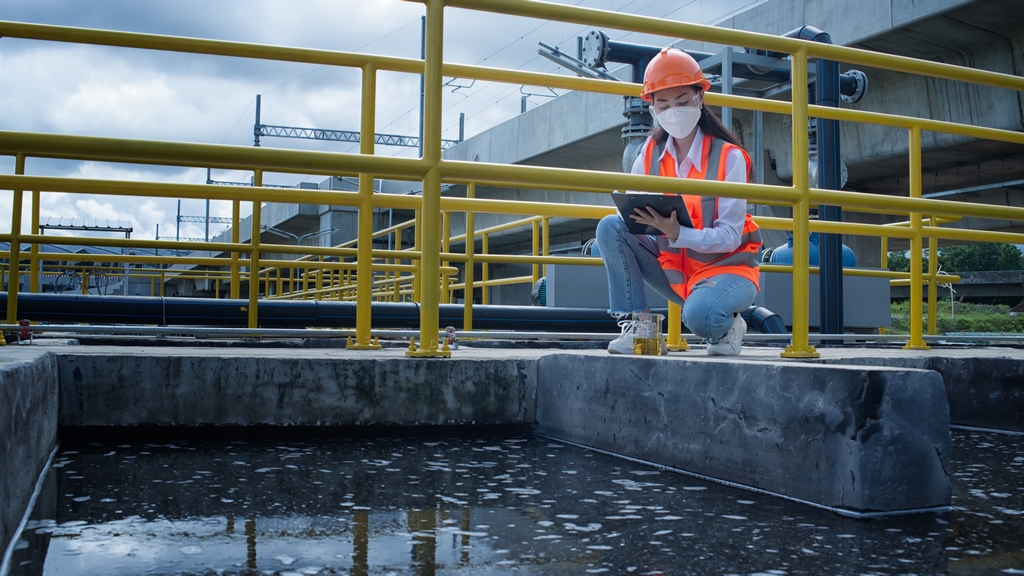Water for Peace and Prosperity
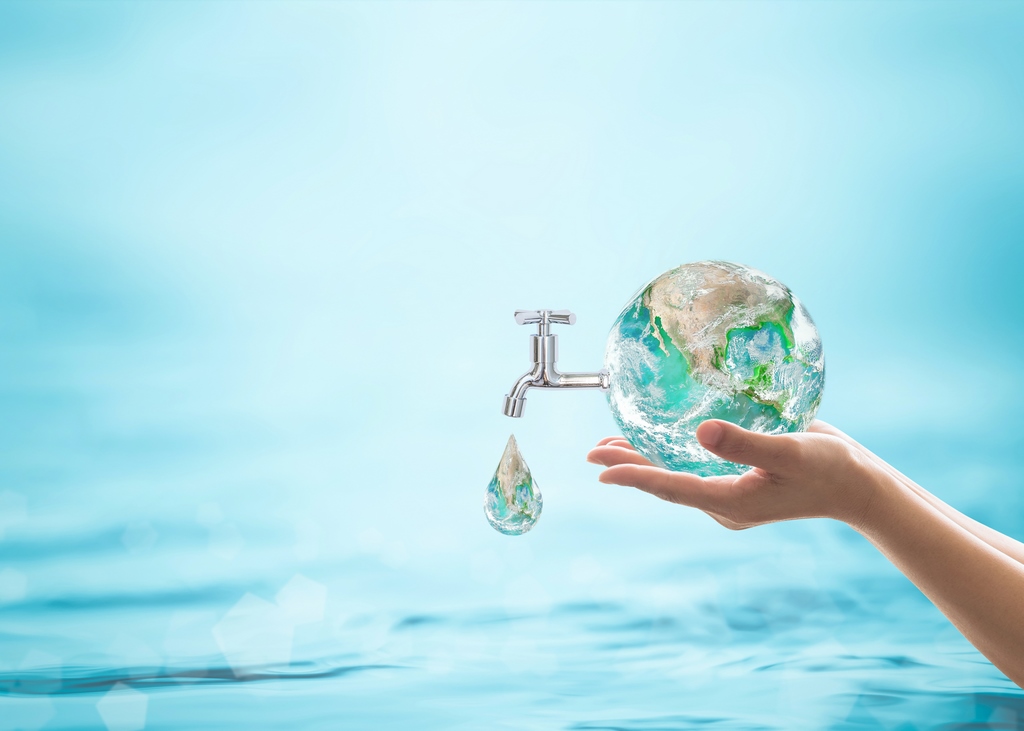

The UN’s annual report summarizing global water-related challenges paints a complex picture characterized by increasing demand for long-term planning and policy-making across governments, industry and science worldwide.
Excerpted from “The United Nations World Water Development Report 2024”. Read the full report here
“Life in us is like the water in a river.” ― Henry David Thoreau
Water nurtures prosperity by meeting basic human needs, supporting health and livelihoods. Fully developed water resource infrastructure management systems promote growth and prosperity by storing a reliable water supply and delivering it to economic sectors, including agriculture, energy, industry, and the relevant business and service sectors that support billions of livelihoods.
Similarly, safe, accessible and well-functioning water supply and sanitation systems foster prosperity through quality of life, with individual and community dividends reflected in education and a healthy workforce. Cooperation over water resources has generated positive and peaceful outcomes, ranging from participatory, community-led initiatives that have relieved local tensions, to dispute settlement and peacebuilding in post-conflict settings and transboundary watersheds.
Conversely, inequalities in the allocation of water resources, in access to water supply and sanitation services, and in the distribution of social, economic and environmental benefits can be counterproductive to peace and social stability.
The impacts of climate change, geopolitical unrest, pandemics, mass migration, hyperinflation and other crises can exacerbate water-access inequalities. In nearly all cases, the poorest and most vulnerable groups are those that suffer the greatest risks to their well-being and livelihoods.
Water does not appear to have become a prevalent ‘trigger’ of conflict. However, attacks targeting civilian water infrastructure, including treatment plants, distribution systems and dams violate international law and must be severely condemned by the international community in all cases.
ECONOMIC INDICATION
There is no clear relationship between a country’s per capita gross domestic product (GDP) and its water availability.
This is partly because water influences the economy in many ways, and global trade dynamics and market adaptations can have direct repercussions on the water use of regional and local economies.
While there currently exist no direct metrics to clearly describe the relationship between water availability and prosperity, proxy indicators provide some relevant insights. In low- and lower-middle-income countries, an estimated 70–80% of jobs are water-dependent, as agriculture and water-intensive industries – the mainstays of employment across these economies – rely heavily on water.
Worldwide, the benefit–cost ratio of investments in water, sanitation and hygiene (WASH) services has been shown to provide significant positive returns, notably through co-benefits such as health, education and employment, not to mention basic human dignity.
There is no global repository of data and/or empirical information directly concerning the relationship between water and peace, most likely because the latter is difficult to define, especially when taking account of contributing factors such as equality and justice.
To better understand water’s role in peace and prosperity, here are some key thematic perspectives:
Agriculture
Agriculture is a key socio-economic driver of sustainable growth, livelihoods and labor. Broad-based rural development and the wide sharing of its benefits are effective means of reducing poverty and food insecurity.
Agricultural production is vulnerable to climate-related water risks. In many semi-arid countries, dependence on rainfed agriculture and lack of access to agricultural water for millions of smallholder farmers reduces their production potential.
Irrigation stabilizes production, generating direct benefits (increased profitability and reduced risk of crop failure), as well as indirect benefits (employment, and balanced conditions of food and supply markets). In Sub-Saharan Africa, water is generally available for rural farmers, but capital investment is needed to expand small-scale irrigation.
There is a need for smallholder, people-centred investment as well as large infrastructure-related investments. However, investment opportunities for most of the world’s small-scale farmers are rarely available.
To achieve sustainable water management and food security, states need to focus on responsible governance of water tenure, so that all legitimate water users (including smallholders, women and girls, and indigenous peoples and local communities) have secure and adequate access to water resources, bearing in mind that in rural areas, many people depend on customary tenure arrangements.
Human settlements
Authorities have not given sufficient priority to equity and non-discrimination in access to WASH services, particularly between formal and informal settlements, rural and urban areas, highest and lowest wealth quintiles, and among marginalized groups. The collaborative management of WASH services and water resources can become a peacebuilding asset, provided it is equipped and supported to perform that role.
Numerous challenges undermine the provision of WASH services in conflict situations, due to the breakdown of essential infrastructure, displacement of populations, insecurity and limited access to resources.
Damage to water infrastructure increases the amount of time women and girls/children – primary collectors of water – are exposed to the threat of violence, and reduces the time they have available for education, work and leisure.
As urban populations grow, people and property are increasingly concentrated in flood-prone areas. Informal settlements also face particularly difficult challenges in the aftermath of flood events, including loss of income, damage to infrastructure, and limited access to essential services such as healthcare and safe water. Disaster risk reduction policies and programs can address the root causes of vulnerability and build resilience.
Internal disaster-related displacements outnumber conflict-related displacements. Water deficits can be linked to 10% of the increase in migration worldwide. Displacement can increase the burden on local water systems and resources, resulting in tensions between migrant and host communities. Cooperation and joint management of these systems promote peaceful co-existence in and around settlement locations.
Industry
Industry has the capacity – material, human and financial –to shape and increase economic prosperity, while simultaneously influencing and improving social well-being and environmental integrity. Water strengthens industry but does not necessarily generate GDP – some industries use little water but make a significant contribution to GDP and vice versa. However, problems with water quality and accessibility generate risks for industry, exposing it to supply chain disruptions, with direct repercussions on industrial (and economic) growth.
Companies, particularly small ones, can experience declines in sales and employment when urban water services are disrupted. Dry shocks were found to cost two to four times more than wet shocks in terms of lost income. In locations where water outages are frequent, companies sometimes pay bribes, but these do not necessarily lead to improvements in service.
There are many established technologies for using less, reusing and recycling water. A win–win situation is possible where harmful discharges are reduced and the demand for freshwater decreased.
Ways to improve water use efficiency can include modifications in materials, processes and equipment. Wastewater can provide a sustainable source of energy, nutrients and by-products. While industry has at times been the source of local disputes and confrontations over water, it can also de-escalate tensions by leveraging its influence over the use of water through partnerships and cooperation.
Energy
Energy production accounts for between 10 and 15% of global water withdrawals. Water is required in the extraction and conversion of coal, oil and gas (including fracking), and is extensively used for electricity generation, for hydropower and as cooling water for thermal and nuclear power stations. Conversely, considerable amounts of energy are used to pump, treat and transport water and wastewater, including for irrigation and industry.
Desalination is very energy-intensive, accounting for one quarter of the energy used in the water sector globally. Achieving universal coverage for both drinking water and electricity involves reducing energy’s dependence on water and vice versa. In terms of electricity generation, the most water-efficient sources are wind and solar-photovoltaic (PV). Meeting SDG 7 will necessitate a substantial increase in the share of these renewable sources for electricity.
Energy storage is required to compensate for the intermittent nature of wind and solar power. While pumped storage hydropower can provide energy balancing, stability, storage capacity and ancillary grid services, lithium-ion batteries are the fastest-growing storage technology. However, both can generate negative impacts on water supplies, the environment and local populations.
Some approaches and technologies aimed at mitigating greenhouse gas emissions require large amounts of water. The water intensity for biofuels is orders of magnitude higher than for fossil fuels. Carbon capture and storage systems are both highly energy- and water-intensive.
Environment
Ecosystems regulate the amount of water available across space and time, as well as its quality. Over-exploitation of provisioning ecosystem services (food, water, fibre and other raw materials) has impaired the capacity of ecosystems to regulate climate and water, among other benefits. Consequences are potentially disastrous and include disputes over environmental resources and the undermining of prosperity and peace.
Degradation and fragmentation of ecosystems have been linked to outbreaks of diseases, including COVID-19, Ebola, and waterborne vectors of diseases such as malaria. They also increase the likelihood of conflicts between humans and wildlife.
The extent of ecosystem degradation and its role in conflict and losses of prosperity highlight the scope for restoration to become a dominant response to improving water quality and availability, and for climate change adaptation and mitigation. Nature-based solutions usually provide additional benefits, including several related to local prosperity, and are increasingly proving to be cost-effective.
Opportunities exist to facilitate peace by harnessing the positive role that environmental scientists and educators can play in dispute resolution.
Transboundary cooperation
International water law has developed principles and norms that provide the basis for transboundary water cooperation, which can also help solve disputes and contribute to regional stability. ‘Water diplomacy’ seeks to facilitate the political processes and practices aimed at preventing, mitigating and resolving disputes over transboundary water resources, and the development of joint water governance arrangements by applying foreign policy means at different tracks and levels. It can involve actors other than traditional state actors, including civil society organizations or academic networks.
Indigenous and traditional communities may have long-standing networks across borders. Inclusive and participatory transboundary water cooperation platforms and processes lead to a common understanding of their objectives and benefits.
A large proportion of the world’s freshwater resources are in transboundary aquifers. If underpinned by sound data, effective water governance and cooperation can support the conjunctive management of both transboundary surface and groundwater resources.
The promise of full, equitable benefit-sharing has been difficult to realize. Win–win outcomes can involve hidden costs, benefits are not easily measured and quantified, and outcomes are not necessarily evenly distributed (for example in cases where water flows from agricultural land to cities but the cities capture the largest share of the benefits). Knowledge-sharing can also support coordination across sectors and creative financing mechanisms.
Science, technology
Recent advances in science and technology benefiting water management include information and communication technologies, earth observation and remote sensing, advanced sensor equipment, the rise of citizen science supported by low-cost technologies, and the application of ‘big data’ analytics.
Artificial intelligence (AI) has been proposed to help address challenges across WASH systems, water use in agriculture and industry, and water resources management. The overall impacts of AI remain largely unknown.
Potential risks include system-wide compromise owing to design errors, malfunction and cyber-attacks, which could in turn lead to critical infrastructure failure in a worst-case scenario. Information technology companies are becoming increasingly water-intensive due to the liquid cooling systems of the computers that run AI programs and additional electricity required to power the equipment.
Water resource systems cannot be effectively designed and operated unless adequate data and information are available concerning location, quantity, quality, temporal variability and demand. Reliable hydrological data are needed to adaptively manage resources, to calibrate remotely sensed observations, and for modelling. Government agencies tasked with resource monitoring and management often lack the capacity to collect data and perform the analyses required to address water-related economic and social challenges.
Education and capacity development
Although major advances have been made in the adoption of new technologies, the gap between the severity of water problems and the knowledge base and skill sets available to solve them is widening in many places.
This delays the adoption of new technologies for water (and especially wastewater) treatment and integrated river basin management, which, in turn, leads to wasteful water use, contamination of freshwater sources, and unsatisfactory levels of WASH services. Education and capacity development are key to addressing this challenge.
The gap in skills and capacity is even more pronounced on non-technological aspects, such as legal, policy and institutional development. These skills are essential in transboundary river basins or conflict-prone regions, where resolutions may require a process of negotiation and compromise.
Financing
There is a need to make better use of existing sources of finance and to mobilize new capital, including greater international support for developing countries. Creating a heterogeneous investment landscape also involves mainstreaming water security considerations across investments in other sectors.
Thorough assessments of the impacts and benefits of investments can help justify voluntary financing arrangements that encourage local actors to provide non-repayable capital. Valuations can also inform policy instruments such as water tariffs, taxes, charges, and permit or offset markets.
Tiered tariffs aim to improve cost recovery while also maintaining affordability for low-income users, by providing the lowest rates for consumption, up to a given level, for basic needs. The highest tariff blocks are set well above the average cost of service provision and the income generated in this way serves to cover the costs of the subsidized lower blocks.
A better understanding of water-related risks can encourage financial actors to engage with companies to invest in mitigating those risks. Climate change-resilient infrastructure helps preserve the value of investments and the availability of basic services under conditions of uncertainty.
CODA
Sustainable water management generates a plethora of benefits to individuals and communities, including health, food and energy security, protection from natural disasters, education, improved living standards and employment, economic development, and a variety of ecosystem services.
It is through these benefits that water leads to prosperity. And equitable sharing of these benefits promotes peace.
When it comes to water, sharing truly is caring.
The present work is not an official UNESCO publication and shall not be considered as such.
Opening graphic by Chinnapong | Shutterstock, PSA graphic, UNESCO, watering crop photo by Riccardo Mayer | Shutterstock, girl drinking water, Vietnam Stock Photos, wetlands photo by Eric Herman, service engineer, APChannel | Shutterstock, girl on dock, Taras Grebinets, Shutterstock.










